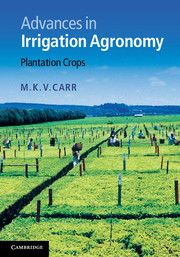8 - Sisal
Published online by Cambridge University Press: 05 May 2012
Summary
Introduction
The sisal plant (Agave sisalana Perrine) is a source of coarse leaf fibres. These are used by industry in the manufacture of twines and ropes, carpet-backing, bags and matting (Figure 8.1). The principal areas of production are Brazil, where it is predominantly a smallholder crop, and East Africa, where it is a large-scale plantation crop (Figure 8.2). The importance of the crop, which is adapted to dry areas, has declined since the mid 1960s due mainly to competition from synthetics made from oil-based polypropylenes. As a result, little has changed in production methods in the last 50 years, and resources for research have been limited (Shamte, 2001).
Sisal belongs to a botanically complex group of American plants, the Agavaceae. It differs from many other plantation crops (except pineapple) in that it has a photosynthetic adaptation (crassulacean acid metabolism, CAM) that facilitates the uptake of carbon dioxide at night. This dramatically improves its water-use efficiency when it is grown under dry conditions.
- Type
- Chapter
- Information
- Advances in Irrigation AgronomyPlantation Crops, pp. 187 - 194Publisher: Cambridge University PressPrint publication year: 2012
- 1
- Cited by



